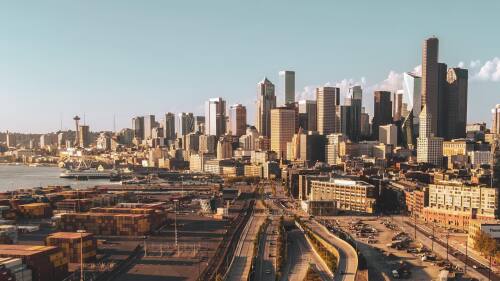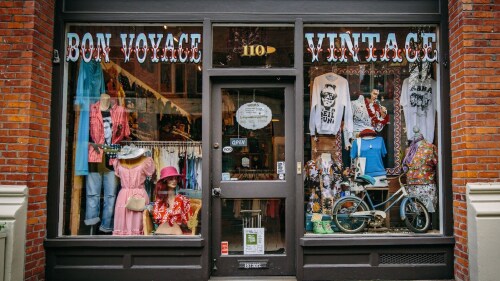It’s natural for us to be curious about the construction that goes on in our city. But if you’ve ever tried to dive into a design review document or attend a neighborhood planning meeting, you may have confronted some pretty confusing phrases.
Here are a few common development-related terms and their basic definitions.
Accessory Dwelling Unit (ADU), noun
A mini home that you keep on your property that isn’t your primary house. It can be either attached to your main house or stand off on its own. This is the technical name for your she-sheds, mother-in-law suites, and the on-site tiny homes rented out on Airbnb.
Density, noun
Used to describe how tightly packed buildings are together. A high-density area would be a neighborhood like downtown Seattle, while a low-density area might describe some blocks in Ballard.
Detached vs. Attached, adj.
You’ll find this commonly used to describe new additions to buildings. An attached unit is a new home, garage, or small space that it attached to the primary structure on a plot of land. And detached unit is still on the property, but not connected to the primary structure.
Growth Management Act, n.
A statewide piece of legislation that requires fast growing areas, like King County, to develop a plan to manage their population growth in a sustainable way. King County has its own Growth Management Planning Council — comprised of officials from Seattle, Bellevue, and the like — to help decide how the city handles its zoning and new developments.
Land parcel, noun
This is used to describe the land within a set of property lines. You’ll see it the most when developers first purchase or begin building on a space.
Land use code, noun
This is the massive governing text that all city planners, government entities, or anyone trying to build something has to follow. It includes everything from specifications on what can be built on certain lots to information on what happens if someone breaks the rules.
Low-rise, mid-rise, high-rise, adj.
Used as a descriptor for zoning types, this quite literally means how generally tall a building should be on a specific parcel of land.
Mixed-use, adj.
This term means that a plot of land, development, or building will be used for both commercial and residential purposes. You’ll see this often with buildings that have a restaurant or store on the first floor and apartments on the floors above it.
Single-family/multi-family, adj.
City planners and the like use these terms to describe residential buildings and how many people are meant to live in them. Single-family homes are houses built for only one family to reside in, and multi-family homes can be anything that’s as big as an apartment building or as small as a duplex.
Transit-oriented development (TOD), noun
This name refers to any sort of building or development site near public transit that will be useful to the people using transit, like restaurants, coffee shops, or grocery stores.
Watershed, noun
An area where groundwater or rainwater drains into a stream, river, lake, or other body of water. These are often protected areas since these waters are often what we (or another living species) drink out of or swim in. Many developments happening near or on a watershed will need to follow specific environmental guidelines.
Unincorporated/Incorporated, adj.
Incorporated towns/cities are places that are legally allowed to have their own forms of government and elected officials. Unincorporated towns are places that are under the direct jurisdiction of a county. (I.e. Seattle is an incorporated city within King County. White Center is an unincorporated part of Hamilton County).











